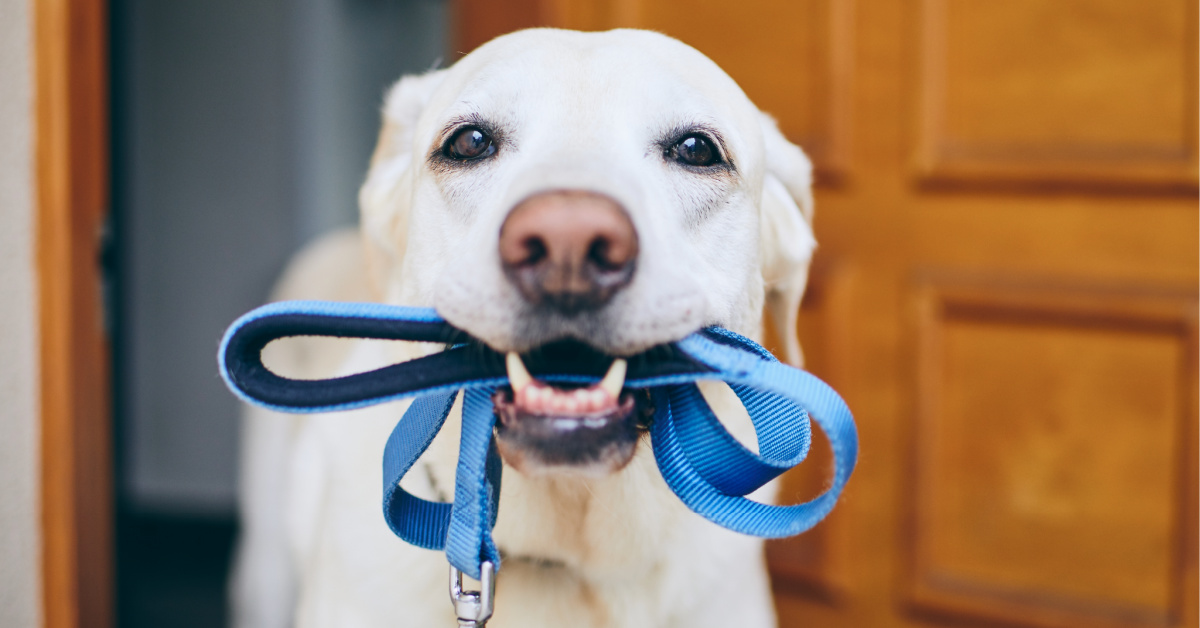Walking with your Labrador with their leash on may have a positive impact on their health. However, there are also times when you just want your Lab to explore and play on their own. Here, then, comes the issue of wanting to keep your Labrador close off-leash.
There are a ton of risks that come with keeping your dog off-leash. For instance, they may run away and accidentally hurt themselves.
But, before all that, let’s try to take a look at why it’s important to leash your dog and the risks that come without it.
Granted, there’s not actually anything wrong with not leashing your dog in areas that allow it, as long as your Lab is well-behaved even in public situations.
But, it does come with a significant amount of risk that you have to understand in order to mitigate.
Why a leash is important
First of all, it is for the safety of your dog. A leash will allow you to monitor your Labrador whenever you go out for walks. It is also a safety precaution in case your dog is very energetic and runs away at the slightest interest. They could easily lost through their impulsive behaviors.
Second, it’s mandated in a lot of public places. When you go out to walk around with your Lab or get some daily exercise, you will find that a lot of places inform strict leash policies. In those situations, a leash, of course, is necessary.
Next, it is a common courtesy. Even if the place you are going to is public and welcomes Labs with open arms, there are people who are uncomfortable with dogs.
That is totally okay, though. Labradors are quite large, and people who used to being around dogs could become intimidated.
Plus, there is always that added risk that your dog could scared and accidentally injure another dog or someone in the area.
Hopefully, that will never happen in your case, but there is always that to keep in mind. You have to be as considerate as possible when gauging situations.
Leashing your dog in public spaces is incredibly important for their safety and well-being, and with good reason. This study in 2010 looked into how much interaction a dog got or engaged in when leashed. The researchers found that dogs who were both leashed were less likely to interact with each other.
This is good in situations like what is happening today with the pandemic. Less interaction between dogs means fewer chances of contracting infectious diseases in a prevalent outbreak.
Take note, however, that this is not always the case. Most of the time, when it is safe, socializing with other dogs is a great experience for your Labrador.
That said, going off leash is not always bad. In fact, it has a ton of benefits both for you and your dog.
Benefits of training your Labrador to stay close even when off-leash
Your dog can play more! There are limitations to playing at home maybe because of space or furniture. Even the yard is sometimes not enough for your Labrador to expend all their energy.
However, places that have wide dog safe areas are lovely alternatives when your Lab is trained off-leash. There, they have the opportunity to explore and have fun like they never would have if they had a leash.
The exploring part is especially fun when your dog is naturally curious. Going off-leash gives them the opportunity to go around and smell interesting smells and do stuff they wouldn’t normally get to do in their leashed time.
On the other hand, a dog that is trained off-leash will also know not to run out in case the door is left open by accident. You are trying to mitigate the dangers by training them if ever a precarious situation comes up.
Training your Labrador Retriever to go off-leash
The idea with training your dog to stay close to you off-leash is giving them cues when to follow you and when they are free to go about. But before you even attempt to go off-leash, you have to make sure that your Labrador will come to you when you call them.
It’s imperative that they know not to ignore you when you call. Training for that is already a process in itself. It can take time before your Lab consistently comes to you when you call them, so you have to be consistent and patient in training.
The first thing to do in training your dog to go off-leash is to establish an understanding of what you want them to do. These cues can depend on you and how you train your dog. Reaching your hand out a little while crouching or bending over a little are good options.
Your Labrador has to understand that when you do this action and call them, they have to come. Reward their good behavior with treats and praise and never allow them to just ignore you. They need to understand the difference between coming when called and coming just when they want to.
Make sure that you incorporate this recall into their everyday lives. Incorporate it into the games you play with them and in day-to-day activities. Yes, it can be a difficult and long process, but if your dog constantly comes when called, it can work wonders for off-leash training.
When you’ve established a system with your Labrador, it’s time to test it out. Try to look around your area and see if there are any dog spaces that allow off-leash activities and start from there.
Remember to keep up with the systems that you have laid out for both of you. Reward their good behavior at first. This motivates them to keep doing good.
But, don’t overdo it. It’s good to give treats, especially when they do good consistently, but it’s not necessary to bust out the treats every single time. That said, you should bring treats during their first try at a public off-leash space.
Keep at it, and pretty soon, you’ll have a Labrador that is well-trained in staying close to you when outside, even without a leash!
However, as I said before, don’t expect this to happen overnight. Dogs’ brains are not wired that way, and training can take weeks or even months.
Just be patient with the process and remind yourself that this is eventually for the safety of your beloved pet.
What to do when they run off
Even with the perfect training and exemplary record, you still have to be prepared for the risks of going off-leash. Be sure that you know what to do in the event that your Labrador accidentally runs off away from you.
Before anything else, make sure that your dog has some contact information attached to them always. It is not a foolproof plan, but it’s better than not taking any precautions at all.
That covered, do not panic and run towards your dog. Labradors are playful animals and will probably run faster thinking that it’s all a game. Plus, they’re fast, and you stand very little chance of actually catching up to them in time.
Instead, you should stand firm and wait for them to come to you. And when they do, give them treats and praise. This is important to help them understand that coming back to you is always a positive experience.







